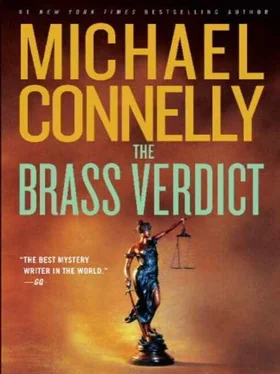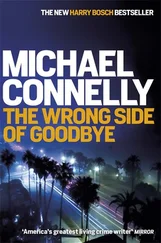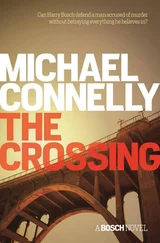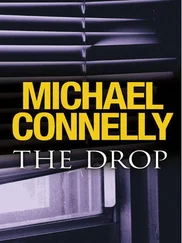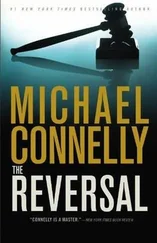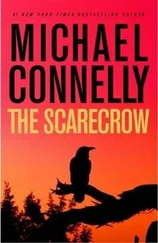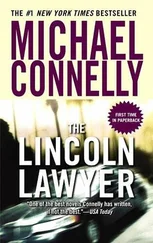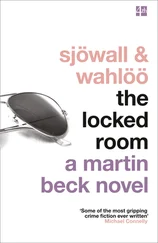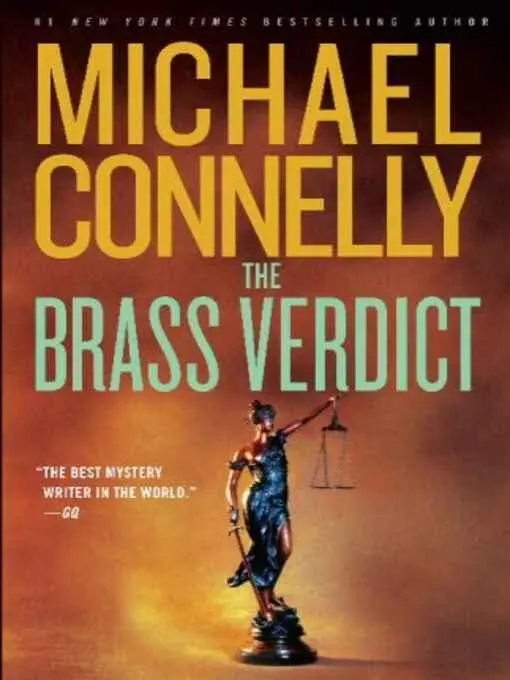
Michael Connelly
The Brass Verdict
Book 14 in the Harry Bosch series
The second book in the Mickey Haller series
In memory of Terry Hansen and Frank Morgan
1992
Everybody lies.
Cops lie. Lawyers lie. Witnesses lie. The victims lie.
A trial is a contest of lies. And everybody in the courtroom knows this. The judge knows this. Even the jury knows this. They come into the building knowing they will be lied to. They take their seats in the box and agree to be lied to.
The trick if you are sitting at the defense table is to be patient. To wait. Not for just any lie. But for the one you can grab on to and forge like hot iron into a sharpened blade. You then use that blade to rip the case open and spill its guts out on the floor.
That’s my job, to forge the blade. To sharpen it. To use it without mercy or conscience. To be the truth in a place where everybody lies.
I was in the fourth day of trial in Department 109 in the downtown Criminal Courts Building when I got the lie that became the blade that ripped the case open. My client, Barnett Woodson, was riding two murder charges all the way to the steel-gray room in San Quentin where they serve you Jesus juice direct through the arm.
Woodson, a twenty-seven-year-old drug dealer from Compton, was accused of robbing and killing two college students from Westwood. They had wanted to buy cocaine from him. He decided instead to take their money and kill them both with a sawed-off shotgun. Or so the prosecution said. It was a black-on-white crime and that made things bad enough for Woodson – especially coming just four months after the riots that had torn the city apart. But what made his situation even worse was that the killer had attempted to hide the crime by weighing down the two bodies and dropping them into the Hollywood Reservoir. They stayed down for four days before popping to the surface like apples in a barrel. Rotten apples. The idea of dead bodies moldering in the reservoir that was a primary source of the city’s drinking water caused a collective twist in the community’s guts. When Woodson was linked by phone records to the dead men and arrested, the public outrage directed toward him was almost palpable. The District Attorney’s Office promptly announced it would seek the death penalty.
The case against Woodson, however, wasn’t all that palpable. It was constructed largely of circumstantial evidence – the phone records – and the testimony of witnesses who were criminals themselves. And state’s witness Ronald Torrance sat front and center in this group. He claimed that Woodson confessed the killings to him.
Torrance had been housed on the same floor of the Men’s Central Jail as Woodson. Both men were kept in a high-power module that contained sixteen single-prisoner cells on two tiers that opened onto a dayroom. At the time, all sixteen prisoners in the module were black, following the routine but questionable jail procedure of “segregating for safety,” which entailed dividing prisoners according to race and gang affiliation to avoid confrontations and violence. Torrance was awaiting trial on robbery and aggravated assault charges stemming from his involvement in looting during the riots. High-power detainees had six a.m. to six p.m. access to the dayroom, where they ate and played cards at tables and otherwise interacted under the watchful eyes of guards in an overhead glass booth. According to Torrance, it was at one of these tables that my client had confessed to killing the two Westside boys.
The prosecution went out of its way to make Torrance presentable and believable to the jury, which had only three black members. He was given a shave, his hair was taken out of cornrows and trimmed short and he was dressed in a pale blue suit with no tie when he arrived in court on the fourth day of Woodson’s trial. In direct testimony elicited by Jerry Vincent, the prosecutor, Torrance described the conversation he allegedly had with Woodson one morning at one of the picnic tables. Woodson not only confessed to the killings, he said, but furnished Torrance with many of the telling details of the murders. The point made clear to the jury was that these were details that only the true killer would know.
During the testimony, Vincent kept Torrance on a tight leash with long questions designed to elicit short answers. The questions were overloaded to the point of being leading but I didn’t bother objecting, even when Judge Companioni looked at me with raised eyebrows, practically begging me to jump in. But I didn’t object, because I wanted the counterpoint. I wanted the jury to see what the prosecution was doing. When it was my turn, I was going to let Torrance run with his answers while I hung back and waited for the blade.
Vincent finished his direct at eleven a.m. and the judge asked me if I wanted to take an early lunch before I began my cross. I told him no, I didn’t need or want a break. I said it like I was disgusted and couldn’t wait another hour to get at the man on the stand. I stood up and took a big, thick file and a legal pad with me to the lectern.
“Mr. Torrance, my name is Michael Haller. I work for the Public Defenders Office and represent Barnett Woodson. Have we met before?”
“No, sir.”
“I didn’t think so. But you and the defendant, Mr. Woodson, you two go back a long way, correct?”
Torrance gave an “aw, shucks” smile. But I had done the due diligence on him and I knew exactly who I was dealing with. He was thirty-two years old and had spent a third of his life in jails and prisons. His schooling had ended in the fourth grade when he stopped going to school and no parent seemed to notice or care. Under the state’s three-strike law, he was facing the lifetime achievement award if convicted of charges he robbed and pistol-whipped the female manager of a coin laundry. The crime had been committed during three days of rioting and looting that ripped through the city after the not-guilty verdicts were announced in the trial of four police officers accused of the excessive beating of Rodney King, a black motorist pulled over for driving erratically. In short, Torrance had good reason to help the state take down Barnett Woodson.
“Well, we go back a few months is all,” Torrance said. “To high-power.”
“Did you say ‘higher power’?” I asked, playing dumb. “Are you talking about a church or some sort of religious connection?”
“No, high-power module. In county.”
“So you’re talking about jail, correct?”
“That’s right.”
“So you’re telling me that you didn’t know Barnett Woodson before that?”
I asked the question with surprise in my voice.
“No, sir. We met for the first time in the jail.”
I made a note on the legal pad as if this were an important concession.
“So then, let’s do the math, Mr. Torrance. Barnett Woodson was transferred into the high-power module where you were already residing on the fifth of September earlier this year. Do you remember that?”
“Yeah, I remember him coming in, yeah.”
“And why were you there in high-power?”
Vincent stood and objected, saying I was covering ground he had already trod in direct testimony. I argued that I was looking for a fuller explanation of Torrance ’s incarceration, and Judge Companioni allowed me the leeway. He told Torrance to answer the question.
“Like I said, I got a count of assault and one of robbery.”
Читать дальше
